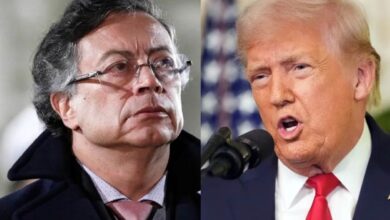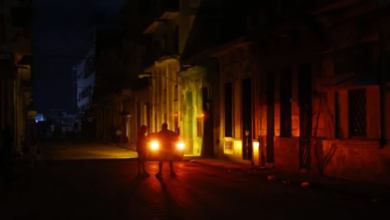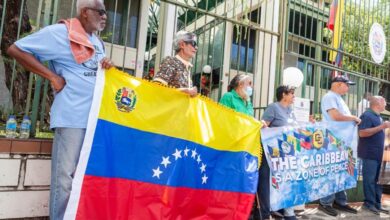How is the political crisis in Peru going?
The institutional clash has the country plunged into a crisis after the congress was dissolved, Vizcarra suspended and the acting president resigned.

President of Peru, Martín Vizcarra. / Photo: Presidency
LatinAmerican Post | Marcela Peñaloza
Listen to this article
Leer en español: ¿En qué va la crisis política de Perú?
The last week for Peru has been chaotic. On September 30, President Martín Vizcarra dissolved the Congress and called elections when this institution rejected a vote of confidence to make changes in the process of selecting candidates for the Constitutional Court (TC, in Spanish). Given the measure, which several congressmen considered unconstitutional, Congress – composed mostly of Fujimori opposition – virtually dismissed him for a year due to "temporary disability" and voted to replace him with the Vice President Mercedes Aráoz.
However, on the night of Tuesday, October 1, in an unexpected turn, the acting president resigned from the position considering that there are no minimum conditions to assume the position. In addition to quiting to her new position, Aráoz also resigned as constitutional vice president of the Republic. The official explained in a letter spread on her social networks that the constitutional order of Peru had been broken.
He decidido renunciar irrevocablemente al cargo de Vicepresidenta Constitucional de la República. Las razones las explico en la carta adjunta. Espero que mi renuncia conduzca a la convocatoria de elecciones generales en el más breve plazo por el bien del país. pic.twitter.com/c4tz4tnzMw
— Mercedes Aráoz (@MecheAF) 2 de octubre de 2019
The election of the new members of the Constitutional Court is essential to resolve the power dispute between the executive and the legislature powers. According to the BBC, the new members could "decide important decisions such as the freedom or imprisonment of politicians involved in corruption." Vizcarra has affirmed that the election of the TC is not transparent and that it does not guarantee the division of powers of the country.
Read also: Political crisis in Peru: Vizcarra dissolved the congress
Why did the TC elections detonate the crisis in Peru?
Some of the cases that the TC is solving are controversial, further stress the relations between Peruvian organizations, and polarize society to a greater extent. In the hands of the TC is the release of Alberto Fujimori, former president of Peru who had received the pardon granted by Pedro Pablo Kuczynski in December 2017. The Peruvian justice reversed the decision considering that the pardon occurred as an exchange with Fujimori to prevent his party from dismissing PPK, who eventually quit. Currently, the former president is in prison for committing crimes against humanity.
Alberto Fujimori is not the only family member in the hands of the TC. The court is studying the annulment of Keiko Fujimori's preventive prison, deprived of her freedom after being involved in a money laundering scandal related to Odebrecht. Fujimori's defense seeks to annul the sentence, which was initially 36 months and was reduced to 18. According to the BBC, Wilber Medina would be among the candidates to form the TC.
Medina has stated in his social networks that he is in favor of annulling the conviction of the opposition leader. However, he would not be the only one that would favor Keiko Fujimori. Ernesto Álvarez and Carlos Hakansson appear on the list of candidates, who have also claimed to be in favor of the release of the former president's daughter, Alberto Fujimori.
Who solves the crisis?
Now, ironically, the Constitutional Court (TC) will be responsible for issuing the final decision on the dissolution of Congress. The decision of the now former vice president stopped the institutional shock and would allow parliamentary elections to take place. However, the opposition is asking Vizcarra to resign, so that general elections are held and not just legislative.
Citizens for their part have supported Vizcarra's decision to dissolve Congress. The president has also received the support of governors and mayors.





